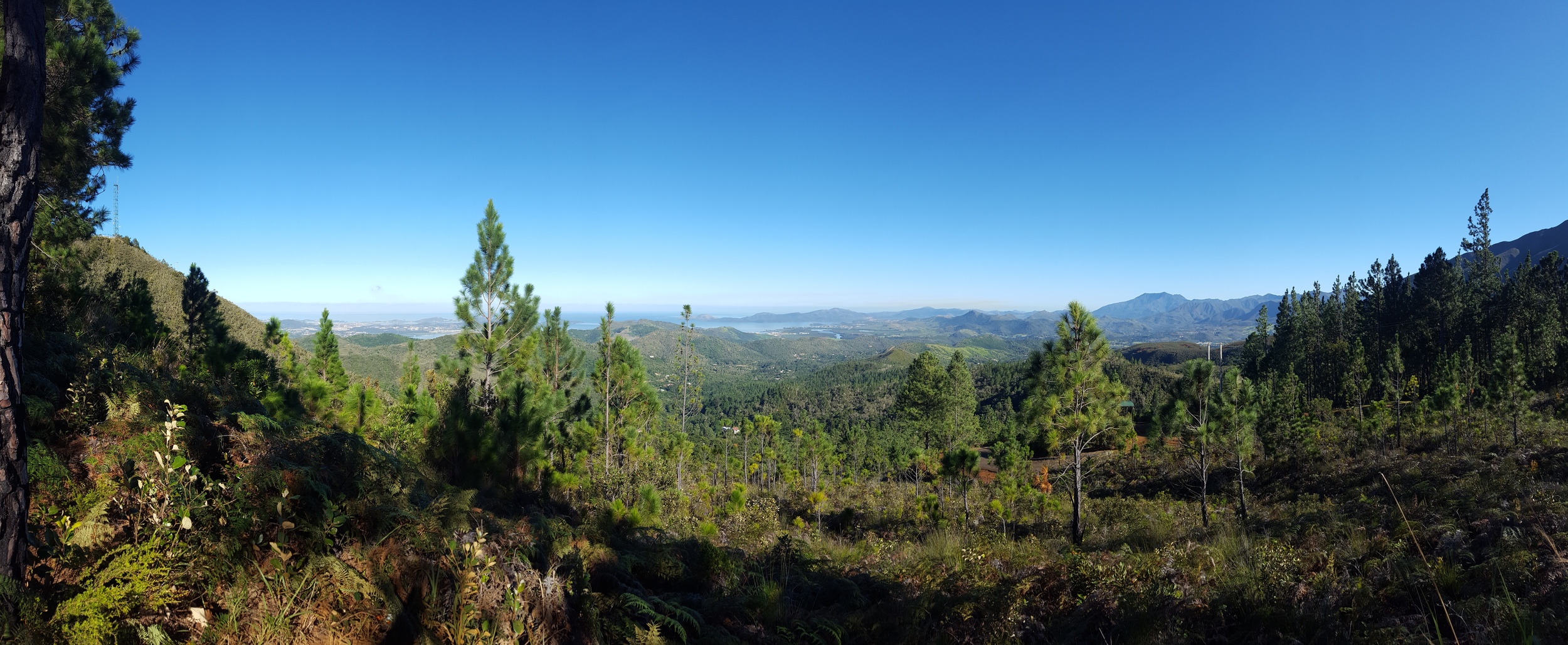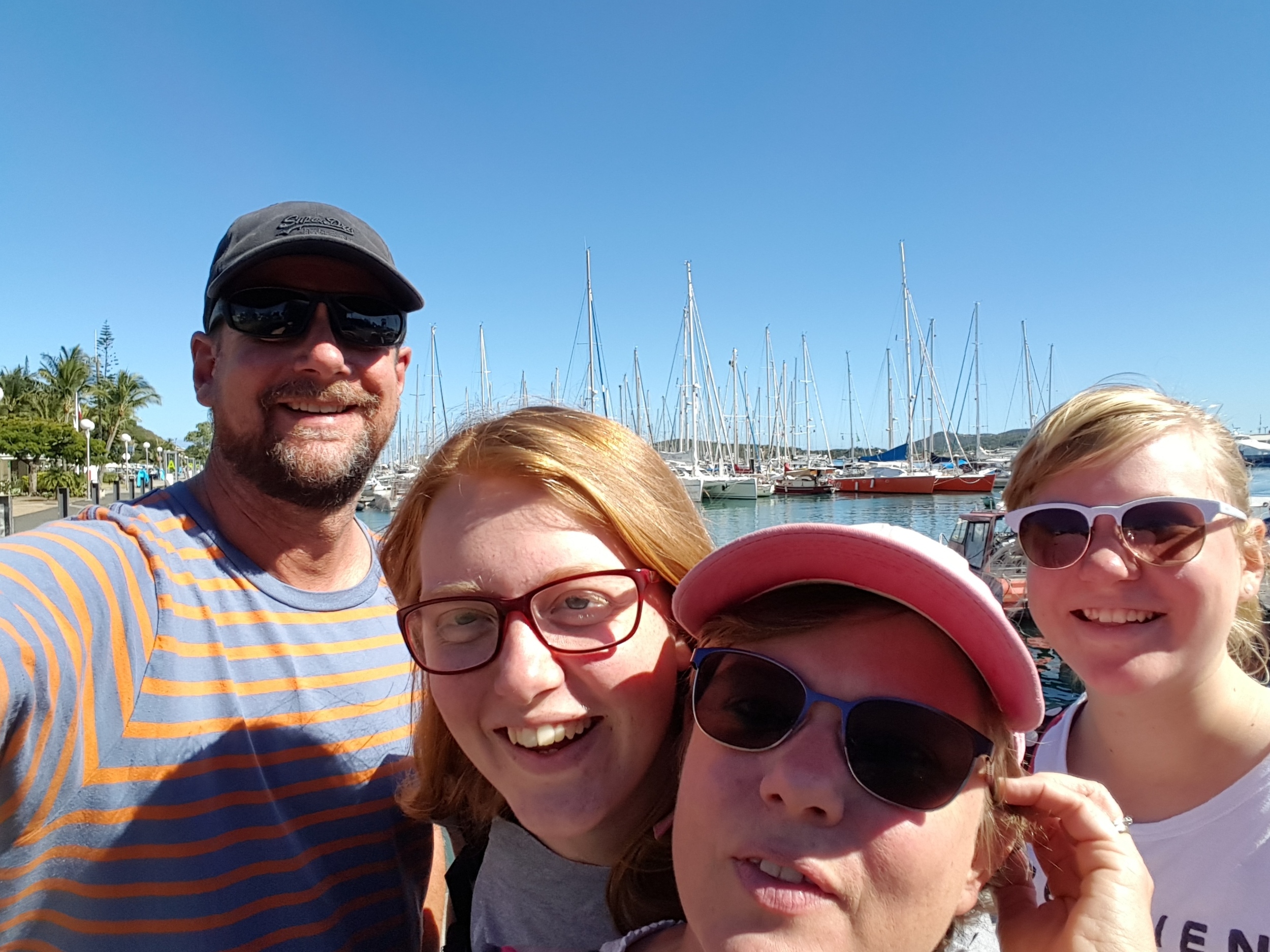Taking the family back to Riviere Bleue, Thursday 6th July
When we planned the trip and realized that we would not be able to stay at the place we wanted north of Noumea, we instead pencilled in a day for a trip to Poe Beach about 2 hours north. I was also hopeful of a detour to the Parc des Grands Fougeres, the other well-known forest site on Grand Terre and where I hoped I could pick up the remaining endemics and maybe get better views of some others. Poe Beach itself seemed to have some birds I needed too, based on Tommy Pedersen’s report. But when I added up the amount of driving, and the day dawned cloudy (our only cloudy day of the entire week) we reconsidered. Plan B was hastily convened and we would do a family trip back to Riviere Bleue and hire bikes – a bit of an active day and a chance for the family to see a Kagu (Erica, much to my surprise last night had been quite gripped off!).
A later start than yesterday was necessary to accommodate teenage sleep patterns, but it was nice to drive back through the “mattoral” in the mountains in the light this time. I never did work out if this was natural habitat, or if the area has been completely deforested. A Whistling Kite drifted over the road at one point, and we would hear the familiar crying whistle of several over the reservoir at Riviere Bleue later in the day.
We arrived around 9.15 and as soon as we’d paid our entrance fee I popped in to the park office to try to find Jean-Marc Meriot to see if he had any more concrete gen on my remaining targets. He wasn’t in the office but the chaps directed me back towards the gate and into a pine plantation where I managed to track him down and introduce myself. The bad news was that New Caledonia Crow is very rare in the park and he couldn’t suggest any site worth trying. I’d be better off going to Mt Koghis. The news for Red-fronted Parakeet and Melanesian Cuckooshrike was better – they could both be found in this very area of pines along with Horned Parakeet (GPS -22.152027, 166.732697). I filed this away with the intention of returned in the afternoon so as not to test the patience of the family. But as we went to drive off, suddenly he was beckoning me over. He had a Red-fronted Parakeet in the tree right in front of him. I struggled to get binoculars out of the boot and arrived in time to see it flush to another pine, but fortunately I was able to locate it for unequivocal tickable views. I ran back to the car to get camera but by now could not relocate it – only a minor tinge of disappointment to a cracking start to the day.
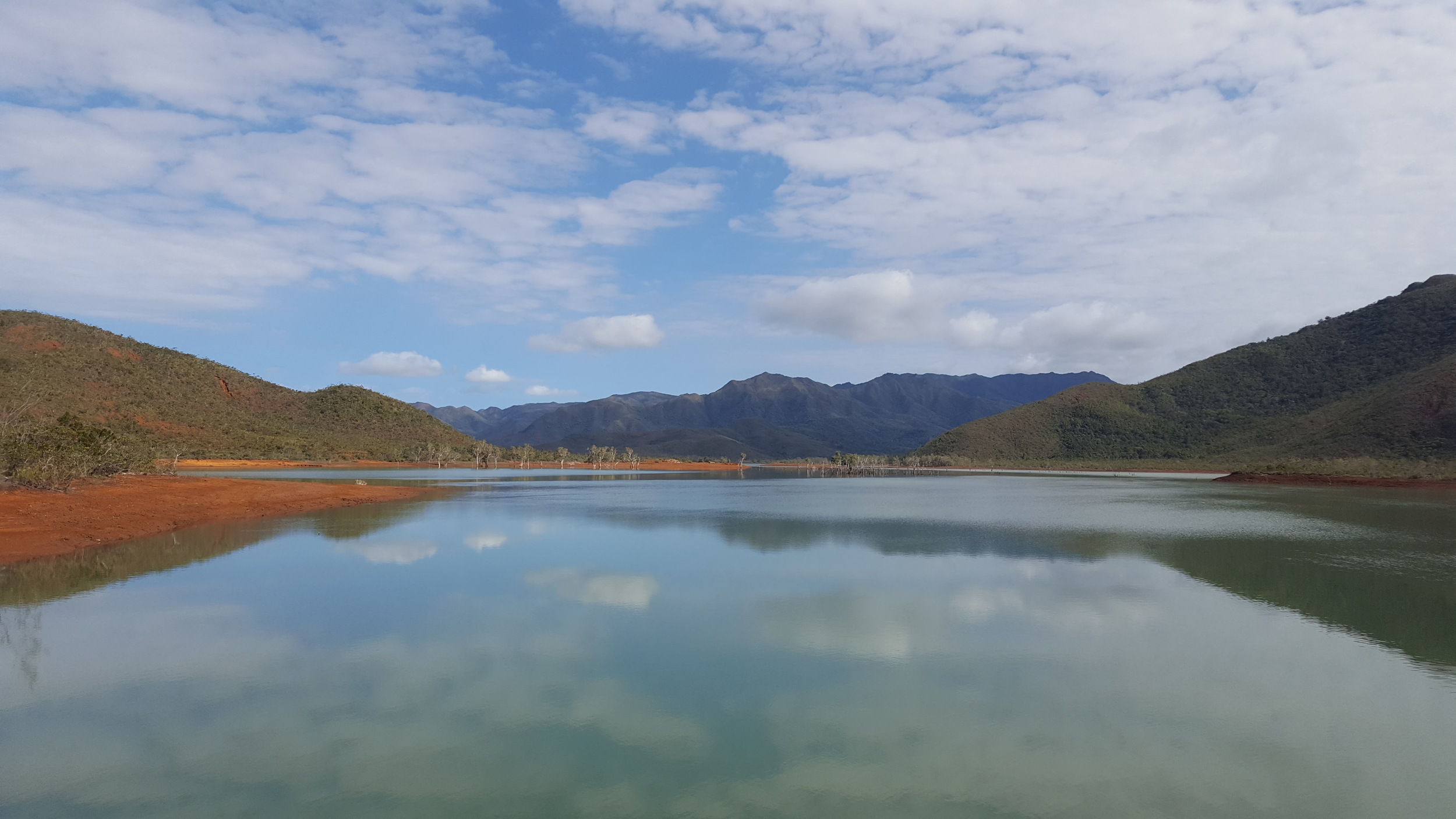
I noted a pair of Long-tailed Triller on the drive to Pont Perignon, and a Barred Honeyeater at the bridge itself. The bike rentals were not cheap (3000F each for the day – it adds up when you have to multiply by 4) but in good nick. It took us about 30min to cycle along the road to the Grand Kaori. I stopped once as the family rode on when I heard a call that sounded interesting. As I searched for the perpetrator a cracking Southern Shrikebill flew across the road, and then in response to a few seconds of playback, sat on a branch rattling away at me while I clicked the shutter.

At the Grand Kaori we walked the boardwalk and I warned the girls they would need to be quiet, careful and lucky to see a Kagu. Secretly I did not have high hopes. As we approached the back stretch where the tame bird had performed so well yesterday suddenly Louisa, in front, stopped and pointed out a Kagu no more than 15m in front of us, flicking leaf-litter right next to the track! After we’d all got a decent view we edged forward. Erica wanted some pictures of her own so took over DSLR duty. But then pretty soon, unconcerned by our presence, it simply walked directly towards us closer than close-focus distance, before stopping next to us about a metre away. We filled our boots with phone camera footage.
As with the previous day, we also saw conspicuous Yellow-bellied Flyrobins, New Caledonian Whistlers and Striated Fantails. At Gue de la Pourina we stopped for an early picnic lunch and I tried a quick burst of Crow Honeyeater playback. No action, so I sat down for lunch. No sooner had I taken my seat than I heard an unmistakable single rasp that had to be Crow Honeyeater. I jumped up again and ran through one more burst. A fluttering above me had me going until I realized it was in fact a Goliath Imperial Pigeon. But then as I watched the pigeon, a big black honeyeater bombed over and landed out of sight, possibly on the other side of the river. It didn’t return.
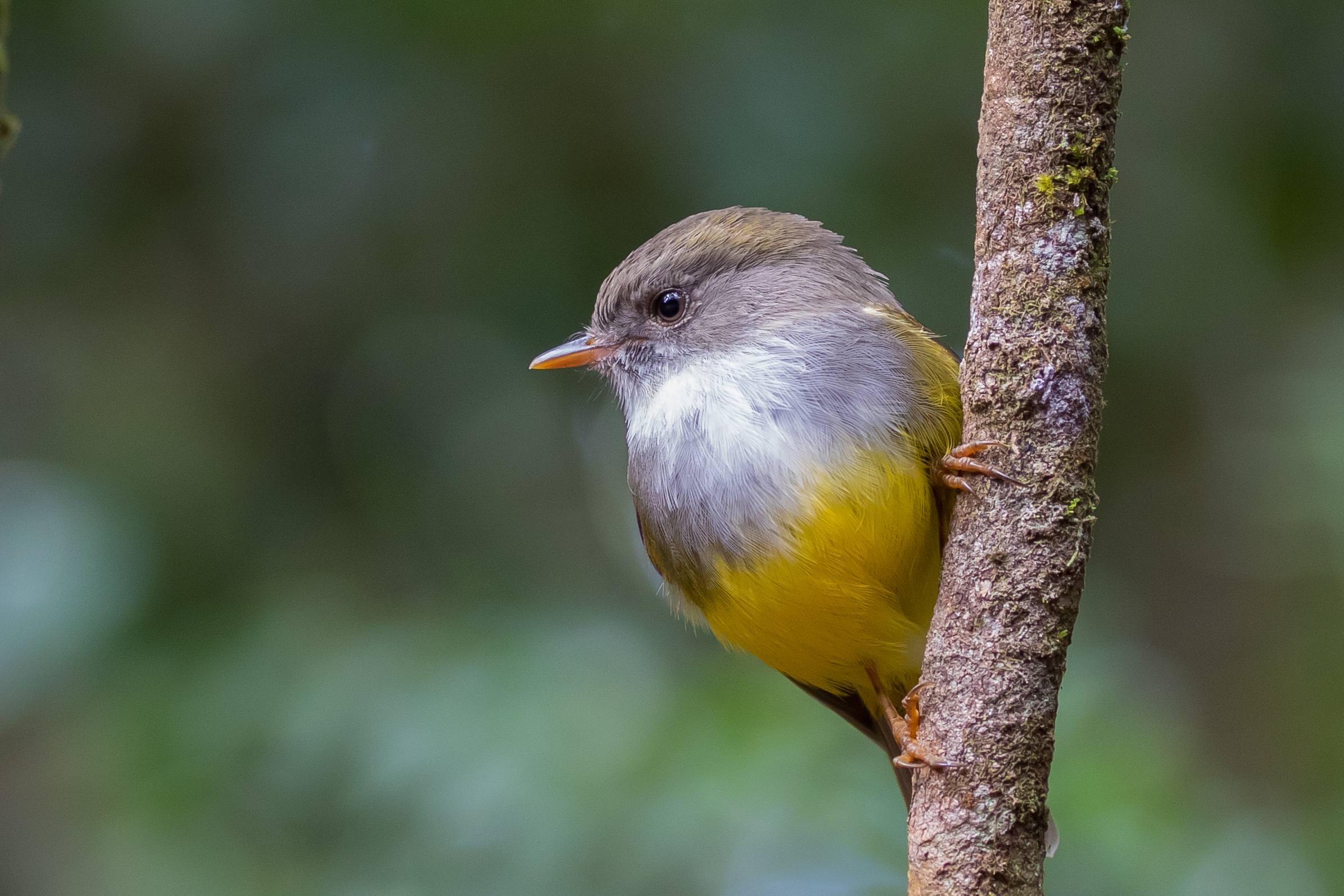
After lunch we carried on to Pont Germain and then beyond.

At the second campsite area (GPS -22.099628, 166.649911) we decided to turn back. I thought I heard a high pitched whistle and wondered if this was a Cuckooshrike. As I searched for the right song to play I pressed the wrong one. Amazingly the cackling sound that my speaker played was answered by something in a tree next to me. I looked down at the phone – “New Caledonian Crow”. Well, that was a stroke of luck! I manoeuvered around and then laid eyes, bins, then lens on this nondescript but very special corvid. New Caledonia Crows have the reputation of being the most intelligent bird species, able to solve puzzles and use tools. This particular bird even had his favourite twig (used to prize grubs from holes in tree trunks) with him!

Our ride back to Pont Perignon had one further avian highlight. About 800m beyond the Grand Kaori a big black honeyeater flashed right across in front of us! “What was that?” said Nikki, carrying on cycling oblivious to the fact she’d just seen one of the world’s rarest birds. I screeched to a halt and could see the stonking Crow Honeyeater sat on a branch in the open just inside the forest. I wrestled with the camera, which was inconveniently around my neck and under my shoulder to avoid it swinging too much as I rode, but by the time I was ready, it had hopped to a less photogenic spot. Nevertheless, third Crow Honeyeater in just over 24 hours was not bad going.
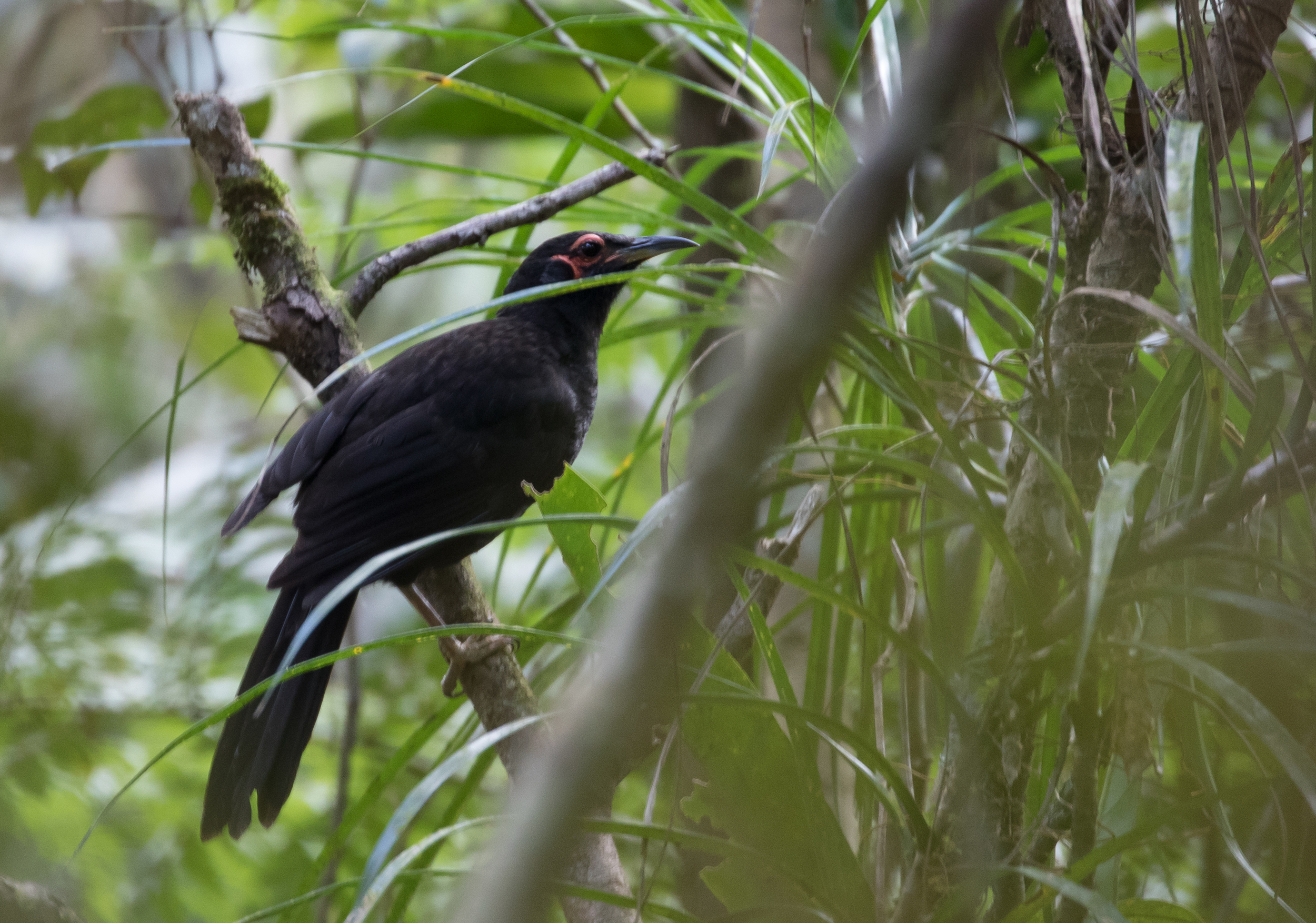
Back at the entrance I got the family to indulge me one last time. We drove in to the piney area and I wandered off hoping to reconnect with a NC Red-fronted Parakeet. I was unable to find one, but did come across a party of vocal Horned Parakeets, one of which eventually obliged for decent photos. A few Barred Honeyeaters and New Caledonia Friarbirds were feeding in the scrub behind the pines. A few times I played the high-pitched note of Melanesian Cuckooshrike but heard nothing.
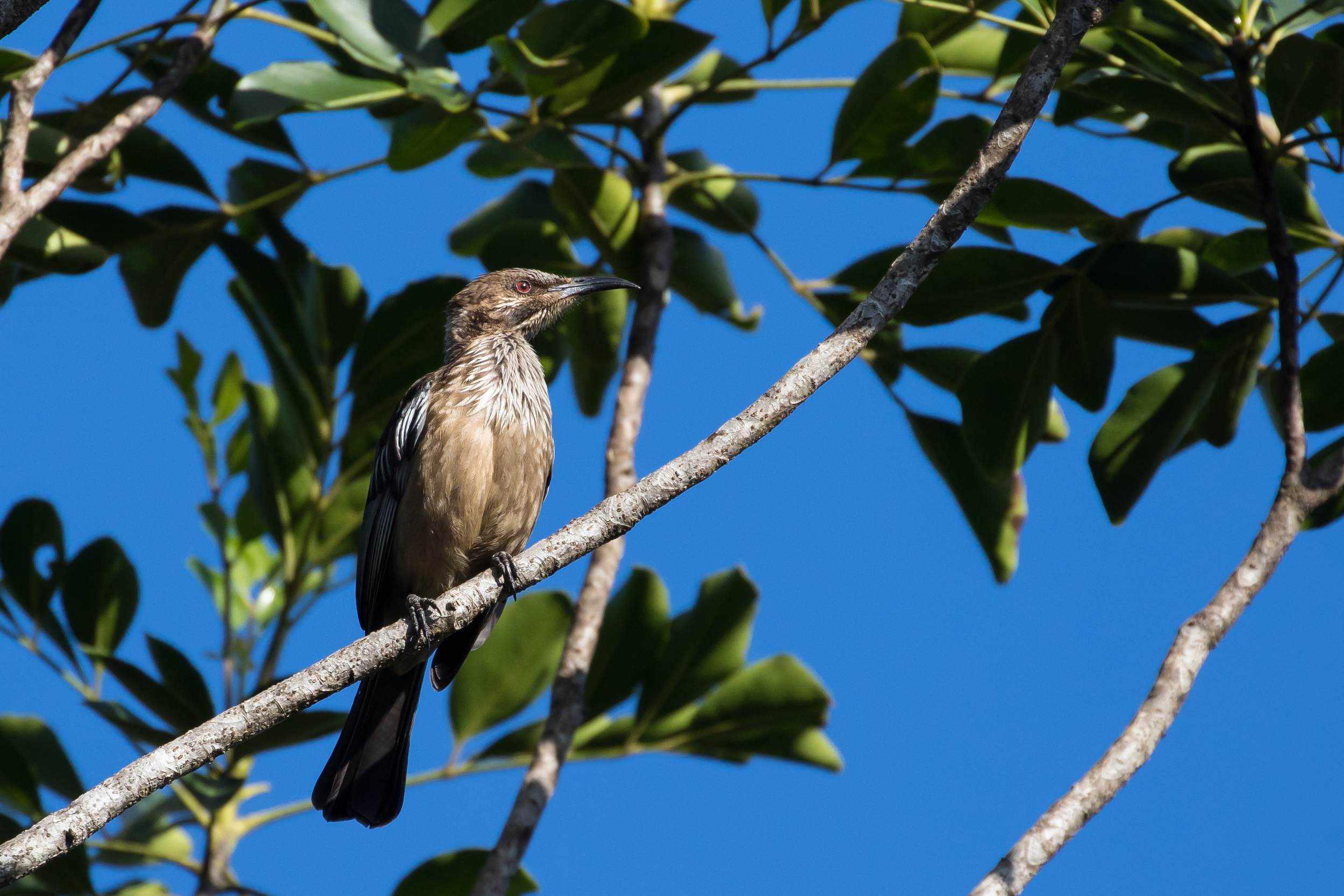
The family was by now growing restless and I retreated to the car. We began to drive off, but as always, just n case, I had the windows down. A high-pitched, drawn-out, single-toned note drifted across from where I had been. Was that the Cuckooshrike? I grabbed my phone and played the call to myself. Yep, that’s exactly what it was, confirmed not just by me, but by unanimous vote in the car. I jumped out and walked briskly to the scrub and played the note again. Nothing. Then a Rufous Whistler appeared. Then, after a few more minutes, and as I was on the verge of giving up again another big dark bird (my third goody of the day) flew over and dropped into the tree right next to me,. The South Melanesian Cuckooshrike peered at me with piercing yellow eyes set in dark steel grey, wondering where on earth the intruder was.
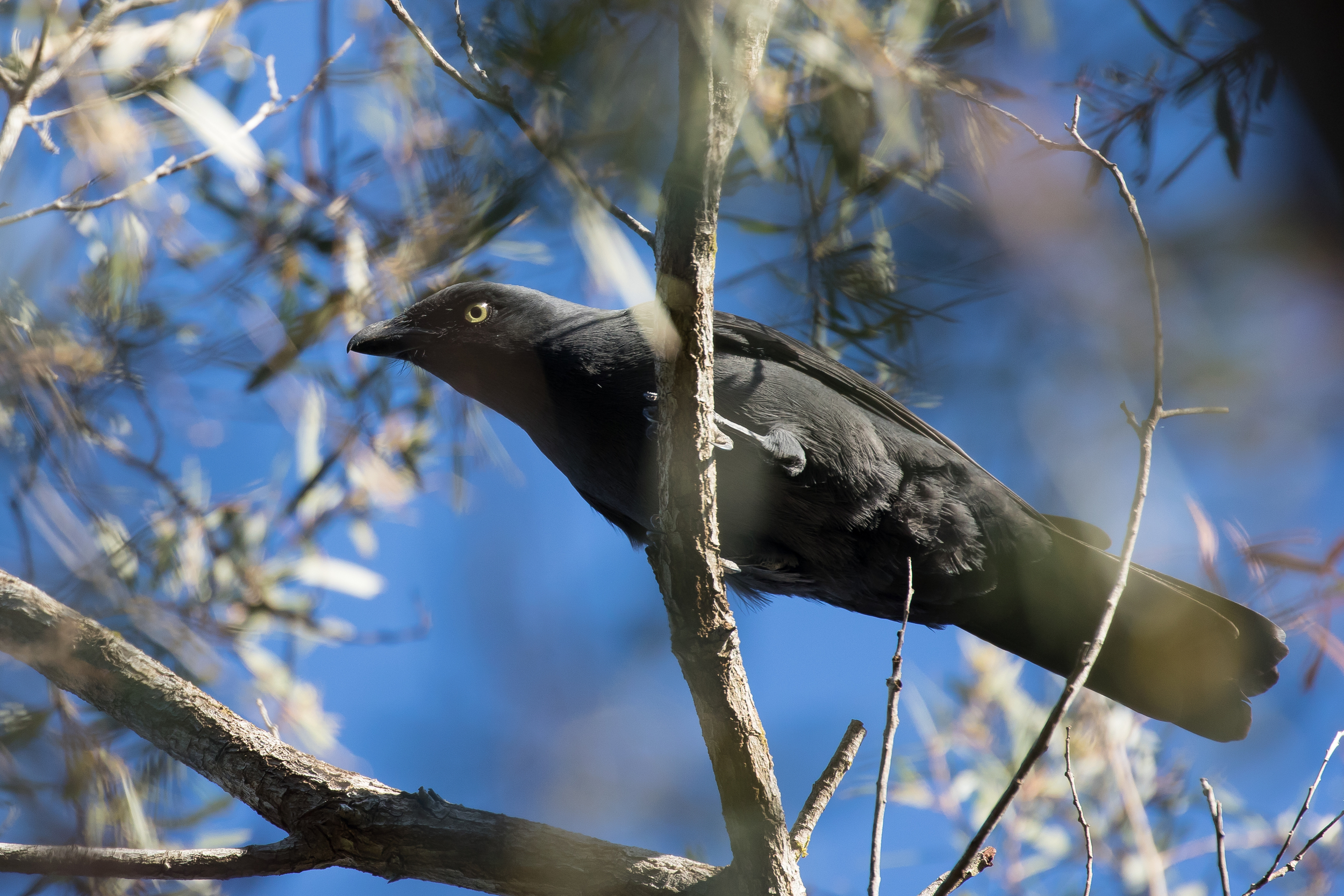
On the drive home I noted Sacred Kingfisher and Osprey.
A brief recce of Mt Koghis, Friday 7th July
We were booked on a ferry transfer to our next hotel at 11.30, and I persuaded Nikki that it would be much better for everyone if I got up early and went birding rather that sitting around getting frustrated at wasting a morning waiting for the girls to wake up. So long as I was back in plenty of time to help pack bags, no problem.
Traffic getting out of Noumea was slow but 45mins later I arrived at the Auberge du Mt Khogi. Immediately I heard Horned Parakeet calling by the Auberge but did not see any. There is normally a 500F entry fee for the forest but there was no one at the booth and I had no coins, only 1000F notes. A quick walk into the forest yielded Streaked Fantail, Fantailed Gerygone, and Spotted Dove, but as often happens it was hard work in the forest itself. I walked back to the Auberge where I tracked down a New Caledonian Crow. I was still missing Striated Starling but a distant unidentified brown bird was surely an immature one. I grabbed some record shots for later analysis and decided by process of elimination it must be this species. Fortunately a few minutes later I found a group of three adult Striated Starling, confirming the last of the endemics. A Long-tailed Triller was conspicuous in a tree above me, posing nicely for photos, and then as I was about to leave a pair of New Caledonian (Red-fronted) Parakeets flew into the same tree and I was able bag record shots!



By 9am it was time to head back. I hoped for the final specialty, Metallic Pigeon (for which I had forgotten to download the call so unsure if I had heard one or not), on the drive back down the mountain. A Goliath Imperial Pigeon on an electricity post with its back to me had me going for a minute until I saw that it had no white throat. A Sacred Kingfisher on wires completed my birding for the morning.
Chilling on a tropical beach, 7-9 July
Our last two full days were planned to stay on an islet about 20min ferry ride from Noumea. This proved to be a wonderful couple of days with blue skies, gorgeous warm seas and fantastic snorkeling and other water activities. As on Ilot Amedee, the highlight for me was swimming with turtles. The first morning I went out with Louisa and found one resting on the reef. Erica – gripped off by her sister’s encounter – came snorkeling with me the next morning and we found 2, one of which lazily and unconcerned glided through the water, over the coral and brightly coloured fish, allowing us to swim alongside. Not for the first time I cursed forgetting to bring the GoPro which I had left back in Adelaide. Only once we were back in Australia did Erica grip me off herself. It turns out she also saw a clown-fish sheltering in some of the soft coral. I had wandered off and though she (claims to have) called, I didn’t hear.
The final morning I went for a walk, and found 3 more turtles swimming under the hotel pontoon rooms, and later that morning Nikki and I kayaked to this spot and spent a bit of time with one that swam around next to and under us as we paddled quietly.



The Ilot is barely 400m long and both mornings I took the chance to wander around before day-trippers arrived in their yachts and jet-skis. I was able to add a few trip ticks this way, including Bar-tailed Godwit, Ruddy Turnstone, Pacific Golden Plover, Common Waxbill. Other birds noted on the island were Silvereye, Rufous Whistler, Buff-banded Rail, Fantailed Gerygone and Red-throated Parrotfinch. A pair of Osprey seems to reside here and I saw them perched and fishing on several occasions. My favourite addition to the trip list was a single Black-naped Tern that I found on my final morning’s walk, not far from where I had turtles.









Our flight on 10th was sufficiently early that we could not risk a transfer from the island and be sure of making it to Tontouta airport in time to check in. Instead we left “paradise” and spent our final night at the comfortable and functional Hotel Beaurivage in Baie au Citron, just around the point from Anse Vata. The staff here were friendly, the location nice and was half the price of other places. It lacked the pool and spa – and the option of a family room – that were our reasons for choosing Le Lagon earlier in the week, but for us for one night, and as a base for a more birding-heavy trip this would be my recommendation over the more expensive Le Lagon. The drive for the flight added two new raptor species to the list, first a brief glimpse of a Swamp Harrier, then, as I refueled the rental car in the village of Tonouta, a Peregrine cruised overhead then stooped steeply on some unseen victim at the end of the airstrip.
We have been very lucky to have a number of really lovely family holidays over the years, but rarely have I been able to combine my birding with the rest of the crew’s activities in such an effective and seamless way. The combination of a small but quality list, relatively easy birding, accessible sites, and great weather and cool family stuff (especially stunning beaches) was winning. Now I need to find something similar for the next hol and start sowing the seeds. Perhaps by this time next year Nikki will have thought of a new excellent idea ;-).
Fin

